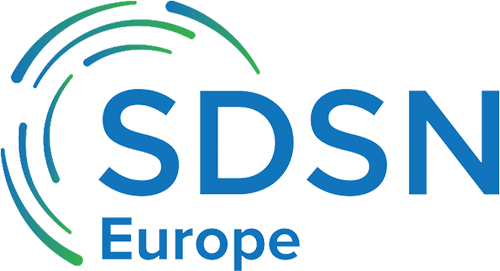On June 14, Granmenos Mastrojeni (Union for Mediterranean) and Simone Borghesi (European University Institute) held lectures on the 2nd day of the final phase of the Siena International School on Sustainable Development.

“The Mediterranean Climate Hotspot: geopolitical, social, and economic challenges” by Granmenos Mastrojeni, Union for Mediterranean
After the Arctic, the Mediterranean Sea is the world’s second-fastest-warming region. If the sea level rises 20 cm in 20 years, salty water will enter the land, making it infertile. It might become a significant problem since coastal areas are home to 40% of the population and a large part of agricultural production.
As a result of the agricultural revolution, people became managers of the ecosystems. The revolution, which happened in the Mediterranean, was a driver of stabilisation and meliorative changes. Previously, the climate defined our identity and helped the Mediterranean countries; today, the climate is increasingly becoming a driver of division.
In terms of climate, the south of Europe is becoming progressively like North Africa. Thus, Europe should keep an eye on Africa to find any viable options for combating climate change, and it is important to be interconnected to discover favorable solutions.
Many scientific findings converge on one conclusion. the scale of peace and interconnectedness in the Mediterranean is so vast that no one single country can cope with it on its own.
“Policy solutions for mitigation: the role of carbon markets” by Simone Borghesi, European University Institute
Tradable permits set a price on the use of natural resources or the pollution produced.
- A market for clean air and water, similar to the European Trading System (ETS) is required. The regulation authority initially allocates permits among the polluters (users) of the natural resources based on an ecological indicator of the ecosystem taken into account (cap).
- Polluters then trade permits among themselves leading to a market price for the pollution, or exploitation of the natural resources. The market price of a resource signals scarcity and creates incentives to switch to a more environmentally friendly technology for polluters to avoid the cost of purchasing the permits.
Through the tradable permits in the carbon market, an artificial market is created, and the incentive for technological progress is given to the polluters. In addition, stakeholders can intervene in the market, which helps the achievement of the targets at the minimum cost.
On the other hand, price volatility can lead to market instability and a disincentive to invest in new technologies. Due to the small number of agents, it is also possible to have low market competition with asymmetric information and high entry barriers.
Nevertheless, the amount of ETS revenues between January 2021 and February 2022 was raised by 30 billion euros. In 2020, climate and energy goals accounted for 72% of ETS revenues.




